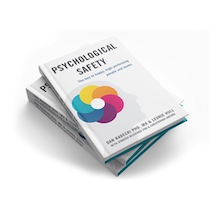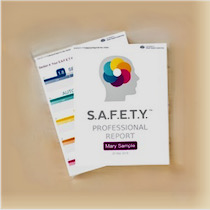As science educators, it is important to not only teach students about the intricacies of the natural world but also to equip them with the skills necessary to thrive in their future careers. One such skill that is often overlooked in the boardroom is the importance of psychological safety in teams. And most critically, psychological safety needs to be put front and center considering the world that lies ahead in the next year. (Be sure to read this article to the end to understand what I mean).
Psychological safety refers to the belief that one can speak up and share their ideas as well as be who they are without fear of being punished, ridiculed, or rejected. It is a crucial aspect of team dynamics, as it allows for open communication, diverse perspectives, and ultimately, better decision-making. Without Psychological SAFETY, teams may struggle to innovate, may have a toxic work environment, and may not be able to address and resolve conflicts effectively.
Creating a psychologically safe environment in teams is essential for innovation. When team members feel unable to share their ideas or concerns, they will likely keep them to themselves, stifling the flow of new and creative thinking. This can lead to a stagnation of ideas and a lack of progress in achieving the team’s goals. By fostering a culture of trust, respect, and empathy, team members will feel comfortable enough to share their ideas, leading to a more innovative and productive team.
Moreover, a lack of psychological safety can lead to an unhealthy work environment. Team members may feel stressed, anxious, and resentful, leading to high turnover rates and a lack of motivation. This can ultimately harm the team’s productivity and effectiveness. By creating a safe and inclusive environment, team members will feel valued and respected, leading to a more motivated and engaged team.
As technology advances, particularly in the field of AI, it is important to consider how it may negatively impact psychological safety in the workplace. The use of AI in decision-making can lead to a lack of transparency and accountability, making it difficult for team members to understand the reasoning behind decisions and to speak up if they have concerns. Additionally, the use of AI in performance evaluations can lead to feelings of resentment and mistrust, as team members may feel that their performance is being judged unfairly. Considering these things, it is easy to understand how AI can trigger a need for Security, Autonomy, Fairness, Esteem and Trust in negative ways.
To mitigate these risks, it is essential to ensure that AI is used in a transparent and accountable manner. Team members should be informed of how and why decisions are being made, and they should have the opportunity to provide feedback and raise concerns. Additionally, using AI in performance evaluations should be done in conjunction with human evaluations, as AI can be prone to biases and may not fully capture the nuances of human performance.
In conclusion, psychological safety is a crucial aspect of team dynamics that is often overlooked. By creating a safe and inclusive environment, teams can foster innovation, build trust, and ultimately achieve better outcomes. As technology advances, particularly in the field of AI, it is important to consider how it may negatively impact psychological safety in the workplace and to take steps to mitigate these risks. As science educators, it is our responsibility to equip our students with the skills and knowledge necessary to thrive in the workplace, and a thorough understanding of psychological safety should be a key component of that education.
Now for the hard truth!
85% of this article was written by an AI simply by typing in the phrase “Write a 600-word blog on the importance of psychological safety in teams and consider how AI might negatively impact Psychological SAFETY in the workplace in the voice of a science educator.” And the image at the top of this article was also created with the assistance of an AI.
We are already using Artificial Intelligence for all sorts of things. Today, in fields as diverse as art, writing, computer coding, legal research and even health analysis like reading MRIs or CAT scans, AI seems to be creating threats to careers that were previously immune to automation. AI threatens not only jobs and job security, but it impacts the importance and type of experience and education people have and will need to get.
As you may read from this article, the AI has been able to compile tons of information into a very nice blog post. And it did all of it with a 1 sentence input and about 30 seconds of computing time. And the AI-generated art cost about 40 cents in iteration plus about 15 minutes of manipulation in PowerPoint.
But the truth is that the AI does not understand what this blog means or what the image was supposed to accomplish. And the AI is not going to need to manage, motivate, and inspire the team of people which needs to work creatively and effectively to create human value into the future. That can only be done by YOU and your team.
So, even if the AI wrote most of this article, the AI is not going to be there to manage your team through the big disruptions that are coming. The AI will not help you create the Psychological S.A.F.E.T.Y.™ your team needs to perform at their best through this time of dramatic change. The AI is not going to help you know your team at a deeper level, which is what it is going to take. This can only be done by you, a human, along with your team of humans. So, though AI’s are pretty cool, and a little scary, your team’s ability to build relationships with each other on a deep level so they can perform at their best is something that will always separate us from the AI.
If you want to know more about how to build Psychological S.A.F.E.T.Y.™ in your team to help you get through the tough challenges we face over the next years, contact us at BrainLeadership.com










